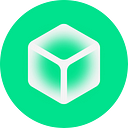Rubic Cross-Chain Revolution: Integrating 19 New Chains on the Path to 100+!
Rubic is taking a huge leap towards our earlier announced target to support 100+ chains as the leading Cross-Chain Tech Aggregator! We have integrated 19 new networks, making it a total of 60+ blockchains available for cross-chain swaps on Rubic.exchange!
Rubic now supports 60+ networks, expanding our reach and providing even more options for seamless cross-chain transactions! Here are some of the newly added 19 networks: EOS, COSMOS, TON, ONTOLOGY, FILECOIN, APTOS, IOTA, KUSAMA, WAVES, and WAX.
Check out the full list of supported blockchains.
With this integration which works via ChangeNOW as a provider, Rubic users can enjoy a wider range of cryptocurrencies and tokens to swap between different blockchains.
Check out the full list of integrated networks below to find out which blockchains are now available for cross-chain swaps on Rubic:
*A fixed rate crypto exchange is an exchange performed at the same rate which is displayed to the client at the beginning of an exchange, regardless of subsequent rate fluctuations. In some cases, fixed-rate exchanges have lower rates, but the opposite is also possible.
For more details about the ChangeNOW integration and its advantages for Rubic users, be sure to check out our previous article dedicated to this exciting milestone: Rubic Will Cover 100+ Blockchains After Integrating ChangeNOW!
Stay tuned for more updates as we continue to expand our cross-chain capabilities and provide the best experience for our users!
Now, let’s take a closer look at some prominent blockchains that are now supported by Rubic:
EOS: Launched in 2018, EOS is a blockchain platform that aims to provide high scalability and performance for decentralized applications (dApps). EOS uses a Delegated Proof of Stake (DPoS) consensus mechanism, where a set of 21 block producers are elected to validate transactions, making it capable of processing thousands of transactions per second.
Cosmos: Cosmos is a multi-chain blockchain ecosystem that enables interoperability between different blockchains. Cosmos uses a consensus mechanism called Tendermint, which provides fast finality and allows for secure communication and data transfer between independent blockchains. Cosmos aims to create an internet of blockchains, allowing developers to build scalable and customizable dApps.
TON: TON, short for Telegram Open Network, is a blockchain platform developed by the popular messaging app Telegram. TON aims to offer fast and secure transactions, as well as support for decentralized applications and smart contracts.
Ontology: Ontology is a high-speed, low-cost public blockchain. It is designed to bring decentralized identity and data solutions to Web3, with the goal of increasing privacy, transparency, and trust. To achieve this, users and enterprises are provided with the flexibility to build blockchain-based solutions that suit their needs, while also ensuring regulatory compliance. Through Ontology’s Ethereum Virtual Machine (EVM), Ontology ensures frictionless compatibility with Ethereum, the first step in creating the Ontology Multi-Virtual Machine and further interoperability for the chain.
Filecoin: Filecoin is a decentralized storage network that allows users to rent out their unused storage space in exchange for a native cryptocurrency called FIL. Filecoin aims to create a market for distributed storage, where users can securely store and share data across a network of independent storage providers, incentivizing participation with cryptocurrency rewards.
Aptos: Aptos is a blockchain platform focused on privacy and security. It utilizes a unique consensus mechanism called Proof of Valuable Work (PoVW), which combines proof-of-work and proof-of-stake elements. Aptos aims to provide confidential and efficient transactions, making it suitable for use cases that require privacy, such as healthcare and finance.
IOTA: IOTA is a blockchain platform designed specifically for the Internet of Things (IoT) ecosystem. It uses a unique consensus mechanism called the Tangle, which is a directed acyclic graph (DAG) that eliminates the need for miners and transaction fees. IOTA aims to provide a scalable and feeless solution for machine-to-machine transactions, enabling seamless communication and transactional capabilities among IoT devices.
Kusama: Kusama is a scalable and interoperable blockchain platform that serves as a “canary network” for Polkadot, another popular blockchain. Kusama allows developers to test and deploy experimental features before they are implemented on Polkadot, making it a playground for innovation. Kusama aims to provide a fast and secure environment for building and deploying decentralized applications.
Waves: Waves is a blockchain platform that focuses on token creation and decentralized exchange (DEX) functionality. It offers an easy-to-use interface for creating and managing custom tokens, as well as a DEX for trading tokens directly on the blockchain. Waves aims to provide a user-friendly and accessible platform for creating and managing digital assets.
WAX: Worldwide Asset eXchange (WAX) is a blockchain platform designed for virtual item trading in online video games. WAX enables the creation and management of digital assets, such as virtual items and collectibles, and provides a decentralized marketplace for buying, selling, and trading these assets. WAX aims to create a transparent and secure ecosystem for virtual item trading, reducing fraud and improving user experience.
About Rubic
Rubic is a Cross-Chain Tech Aggregator for users and dApps.
Our vision is that Rubic’s new umbrella SDK will aggregate the best Web3 cross-chain tech — from signals and oracles, to tokens and NFT bridges, in ready-made templates for DEXs, Lending/Farms, and more. This will help developers easily make their Web3 dApps cross-chain, regardless of what their function is.
Right now, Rubic aggregates 60+ major blockchains, 90+ DEXs and bridges, and enables swapping of 15,500+ assets with the best rates, highest liquidity, and transaction speeds — in one click. Users can do it on https://app.rubic.exchange, but we also provide tools for dApps to enable cross-chain swaps (https://tools.rubic.exchange).
On top of that, Rubic’s app and our cross-chain widget provide fiat on-ramp services, making crypto easy to access and buy.
